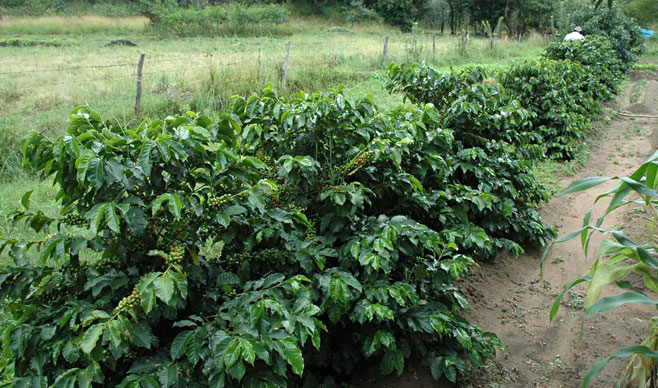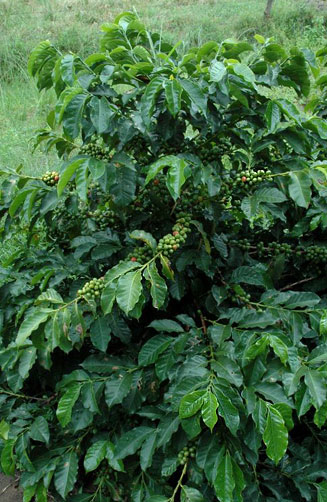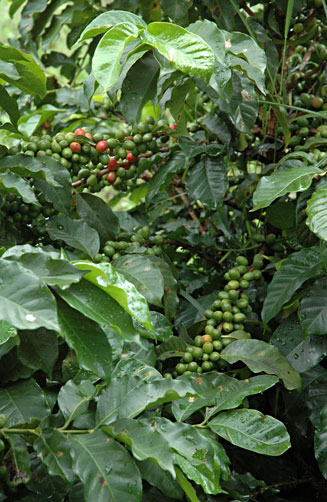|
Coffea arabica (Arabian coffee, Arabica coffee) Life
> eukaryotes >
Archaeoplastida >
Chloroplastida
>
Charophyta > Streptophytina > Plantae (land plants)
> Tracheophyta (vascular plants) > Euphyllophyta > Lignophyta (woody plants)
> Spermatophyta (seed plants) > Angiospermae (flowering
plants) > Eudicotyledons > Core Eudicots > Asterids > Euasterid I >
Order: Gentianales > Family: Rubiaceae > Genus:
Coffea
|
 |
 |
 |
|
Coffee plants in Zambia. [photos by S van Noort,
Iziko ©] |
A shrub or small tree with clusters of two-seeded fruit (the
seeds being the 'coffee beans') that are red or purple when ripe. Native to
Ethiopia but the commercialisation of coffee as a drink has its origins in
Arabia (Yemen), which had a monopoly over the market from about 1400 to 1700 AD.
Coffee is now produced worldwide in tropical regions but most of the production
is from Brazil and Colombia. Coffee is drunk mainly because of the stimulating
effects of caffeine - a typical cup of coffee has about 150 mg of this addictive
substance. However, many people simply like its taste and smell, hence the
popularity of decaffeinated coffee.
See also
Cichorium intybus (Chicory), which is used as a coffee substitute or
addititive.
Ecological relationships
Acetobacter diazotrophicus
Bacteria
Acid-producing, nitrogen-fixing bacteria that are found in roots,
rhizospheres and stems of coffee plants. |
|
|
|
Publications
-
van Wyk, B.-E. 2005. Food Plants of the World -
Identification, Culinary Uses and Nutritional Value. Briza, Pretoria.
|
